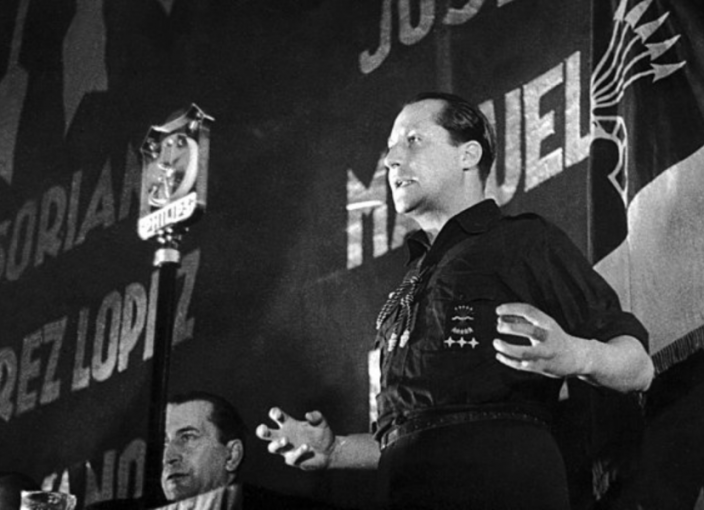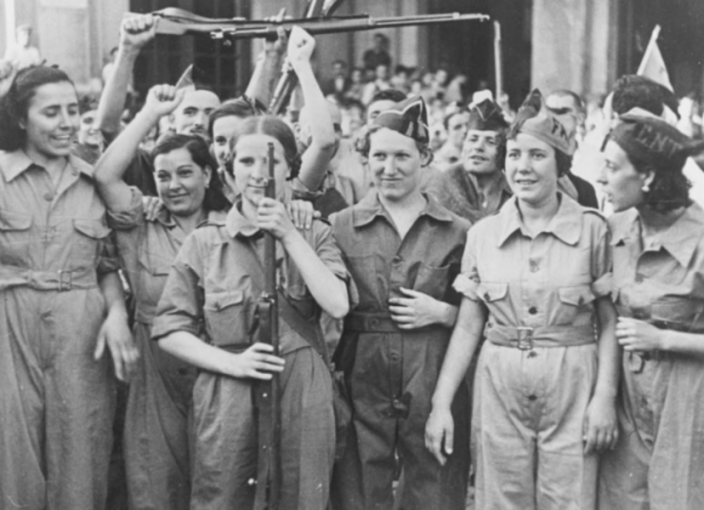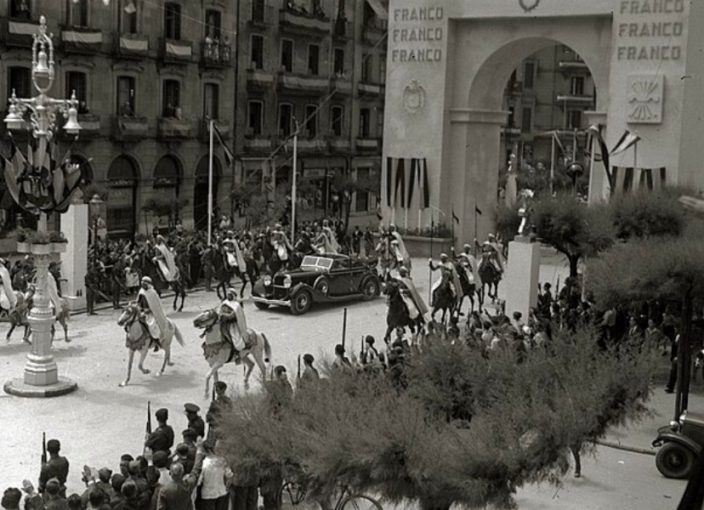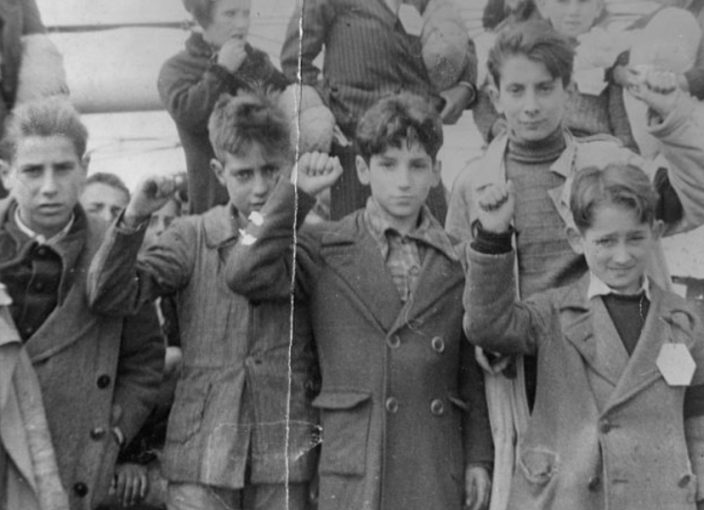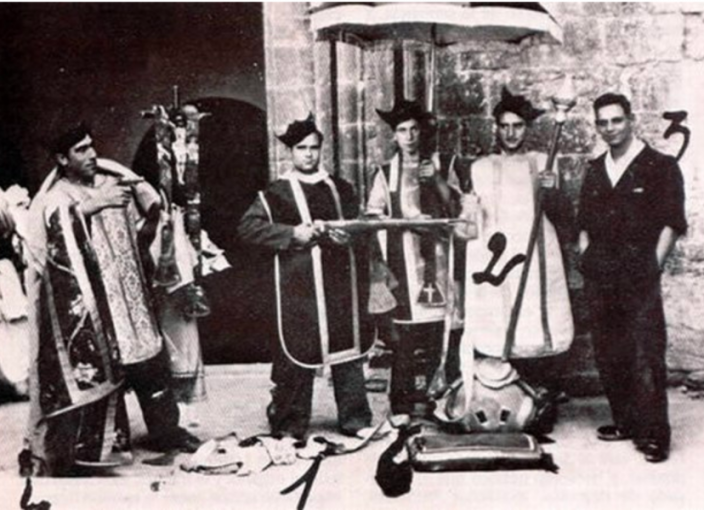Chapter 9
Spanish Civil War
“The massacre of members of the clergy was carried out in different ways and circumstances. Most of the secular priests were individually hunted down, and either killed on the spot or shortly after, or rounded up and slaughtered in groups. Monks were nearly always slain in groups, since they lived in communes and, therefore, entire communities were seized. The mainly collective character of the attacks on the clergy provides a first piece of evidence that it was less a question of personal revenge than the punishment of an entire class regarded as the enemy.”
Julio de la Cueva1
Introduction
While the end of the First World War brought relief from years of bloody trench fighting, it did not mark a period of true peace in Europe—or in the rest of the world. The totalitarian ideologies that caused the Second World War gained momentum during the interwar period, leading to a number of smaller conflicts before the joint Nazi and Soviet invasion of Poland.2 The triumph of the Bolshevik coup in Russia established the Soviet Union, which worked to advance international communism by sponsoring socialist and communist revolutions across Europe.3 Meanwhile, the rise of fascism in Italy and Germany during the 1920s and 1930s further threatened the future of democracy in Europe.4 Much of the continent found itself caught between these aggressive totalitarian movements. While political and social unrest, instability, and revolution spread across Europe throughout this era, there was no other country as devastated by internal conflict as Spain. The clash culminated in the Spanish Civil War of 1936-1939, which is sometimes referred to as the dress rehearsal for World War II.
Antonio Primo de Rivera. Photo via Wikimedia Commons.
The Spanish Second Republic and the Fight for Control
Spain’s neutrality had protected it from the devastation of World War I, but the country became increasingly divided along political, social, and religious lines during the interwar period. A constitutional monarchy under King Alfonso XIII, Spain in practice had been ruled by the military dictatorship of Miguel Primo de Rivera since 1923.5 The king was forced to bestow legitimacy on Primo de Rivera through the official title of Prime Minister, but later withdrew his support. Primo de Rivera had to resign in 1930, due to the severe effects of the Great Depression and the loss of support from his generals.6 This proved to be too late for the king, as the dictatorship had effectively undermined the legitimacy of the monarchy.7
Following the collapse of the military dictatorship, popular support for a republican government developed rapidly within Spain. While the Republican movement was united by a desire to remove the monarchy, it encompassed a wide range of leftist political beliefs, including liberalism, anarchism, socialism, and communism.8 The right wing, meanwhile, was itself an uneasy mix of fascists, monarchists, Catholics, and moderate conservatives. The result of municipal elections on April 12, 1931 indicated growing support for a left-wing socialist republic, and Alfonso XIII fled the country.9 On April 14, 1931, Spain established the democratic Second Republic.
The new left-of-center government managed to please no one. The main areas of disagreement included agrarian reform and the role of the Roman Catholic Church in the Spanish state and society.10 Seeing the Church as an obstacle to modernization, the Republic resolved to secularize Spanish society: civil marriage and divorce, mandatory secular schooling, and the state control of Church property were imposed by legislative fiat. Festivals, religious processions, and all public expressions of religion were banned. A 1931 celebration of Our Lady of Victory was replaced by a beauty pageant.11 Many Catholics and conservatives were offended by these radical “reform” measures. The government further alienated much of the population by monopolizing political power, as, fearful of the influence of fascism, the Republicans ignored democratic principles and denied political representation to their opponents.12
At the same time, many on the Left thought the Republic did not go far enough. Political disagreements between the various Republican factions quickly came to a breaking point.13 The best-organized large movement of the hard-core Left was the Socialist party, which abandoned the earlier coalition and espoused violent revolution. Modeling themselves on the Bolsheviks, they attempted to seize power in an armed insurrection against the Republican government in October 1934.14 The Socialists’ failed insurrection left 1,400 dead.15 The Socialists now faced competition from the left, from both communists and Spanish Anarchists (CNT), neither of whom, as historian Mary Vincent puts it, “had much truck with nation states.”16
Catalan militants of CNT during the Spanish Civil War. Photo via Wikimedia Commons.
At first, the Spanish Communist Party (PCE) played only a minor role in the fight for power because of its small size and general weakness. Founded at the initiative of the Comintern in 1920, its leadership was directly brought under Stalin’s control in 1932.17 Though initially swept up in the romance of a workers’ revolution in sunny Spain—poets and intellectuals were feted in the capital, while peasants and workers were enrolled in a school for subversives—the USSR soon realized that the best hope for leftist government lay in supporting the Spanish socialists.18 Too small in number to have much influence, the Spanish Communist Party obtained Soviet approval to join the revolutionary insurrection of the Socialists in 1934 and, despite the latter’s failure, momentarily championed their cause.19
By 1935, however, Adolf Hitler’s Nazi dictatorship was growing stronger in Germany, with communism one of its major targets. Fascism was also flexing its muscles in Benito Mussolini’s Italy. Assessing both the threat of encroaching fascism and the opportunities he perceived in Spain’s many divisions, Stalin changed Comintern policy from world revolution to “Popular Front” alliances with leftist groups.20 With strong Soviet financial backing, Spanish communism grew rapidly, and Moscow began to give Spain major attention.21
For practical as well as tactical reasons, the left-wing coalition known as the Popular Front was primarily organized by the Socialists and the moderate Left, rather than the Communists. Assisted by electoral fraud, it narrowly won the elections of February 1936, installing a new leftist government.22 Calm did not result, as revolutionary Socialists and Anarchists replaced local government officials across Spain through illegal and violent means.23 On July 17, 1936, General Emilio Mola launched a partially successful Nationalist coup against the Republican government, less for ideological reasons than to end the chaos. The Spanish Civil War had begun. Within a couple of months, and before Mola’s death in a 1937 plane crash, General Francisco Franco emerged as the leader of the rebel Nationalists and the head of their military, counter-revolutionary dictatorship.24
Franco Donostian 1939. Photo via Wikimedia Commons.
Civil War
The Spanish Civil War stands out for the brutality exhibited by all sides, and for the difficulty of developing an accurate history of the violence. During Franco’s postwar regime between 1939 and 1975, Republican atrocities were publicized and exaggerated, while those of the Nationalists were minimized or justified; after 1975, when the crimes of the Nationalists came to light, Republican violence was often characterized as spontaneous, unplanned, and uncontrollable.25 Historians still debate the number of casualties, due to a combination of factors: the politicization of history, the destruction of records and documents, and the inaccessibility of some archives long after the end of Franco’s regime.26 For many years, the Spanish themselves were anxious to put the past behind them, and historian Ruth McKay notes the inability of English-speaking historians in particular to grapple with the complex nature of Spanish society: “Something as integral and difficult as religion, for example – Catholicism, to be precise – has frequently been seen by foreign historians as a monolithic confirmation that Spain is actually another planet.”27 The rest of this chapter will focus on the role of communism and the USSR in the violence of the Spanish Civil War, but this does not intend in any way to minimize the atrocities committed by the fascists in the conflict.28
While the atrocities committed by the Nationalists are widely known and denounced, the political violence of the socialists, anarchists, and communists in Republican-held territory during the civil war was equally ruthless. The various left-wing parties orchestrated a highly organized terror campaign against their political opponents.29 Indeed, far from being the result of anarchy and disorder, the terror perpetrated by left-wing extremists was an “integral” component of their war effort against Franco’s forces.30 The Republicans not only waged war on the battlefield, but sought systematically to purge their territories of alleged spies and saboteurs. According to historian Julius Ruiz, “The myth of a homicidal fifth column has its origins in the exclusionist political culture of the left.”31 Historian James Michael Yeoman argues further that “violence became a source of legitimacy and power for Republicans, socialists, communists, and anarchists alike, all of whom could find justifications for their actions in the ideology and history of their movements.”32 The main perpetrators of the violence were Socialists and Anarchists, with the Communists participating as a smaller third force. In areas where the Republican state collapsed, these radical groups were able to engage freely in revolutionary violence against civilians.33
Particularly ruthless was the repression of the Catholic Church. Far from being the result of spontaneous violence, anti-clericalism was a historically rooted part of the Spanish Left.34 Republican partisans desecrated, burned, and looted churches and shrines all across Spain.35 Relics and statues were paraded through the streets in mock celebrations; the bodies of saints and clergy were dug up and abused. Priests and religious were hunted and massacred: around 6,800 Catholic clergy, including 13 bishops, were tortured and executed by left-wing forces.36 Nor were these killings a reaction to clerical abuses. According to historian José Sanchez, “Priests of all types were killed: strict, loose, moral, immoral, libertines and ascetics,” including “some priests who were social activists and had actively opposed the uprisings.”37 Indeed, murder of the local priest became de rigeur for loyal partisans: “Cassock we see, cassock we kill.”38
Children of the Spanish Civil War Children. Photo via Wikimedia Commons.
Proxy War
A Europe so recently devastated by global warfare cast a wary eye on developments in Spain. Hitler saw in the bloody chaos of Spain a way of distracting his enemies from his aggressions in Eastern Europe; Mussolini looked for a Mediterranean ally to counteract France.39 France’s Popular Front government, meanwhile, was under pressure to support the Republic, but officially anxious to remain neutral. Great Britain was torn as to which side was worse.40 In the summer of 1936, persuaded that appeasement was preferable to escalation, the major European powers, along with the United States and the USSR, signed a nonintervention agreement. From the beginning, the pact, as noted by U.S. Ambassador Claude Bowers, was “a dishonest farce…a mockery.”41 Italy and Germany had been funneling money and military support all along, with no intention of stopping.42
Alarmed by the rise of Francoist fascism, Stalin determined to counteract German and Italian aid to the Nationalist rebels. He directed the Comintern to form an international volunteer army, which became the International Brigades, to assist the Popular Front government. He also threw extensive covert support behind Republican forces. This support included aircraft, tanks, artillery, and munitions, and around 2,000 Soviet personnel, mostly from the secret police.43 These NKVD operatives helped the Republicans against the Nationalists, though, as historian John McCannon notes, “The popularity of the entire Soviet presence in Spain declined as the brutality of the NKVD and the manipulativeness of Stalin’s intentions became apparent.”44 The NKVD and Spanish communists used the Military Information Service (SIM) and death squads to achieve their goals and spread terror within Republican-controlled areas.45 The SIM established secret prisons called checas, in which they regularly tortured prisoners.46 Approximately 56,000 civilians were executed by Republican militias and death squads throughout the civil war, with 10,000 people killed in Madrid alone.47 Furthermore, the Soviets demanded a high price for their aid: 60 per cent of the Republic’s gold reserves.
Republicans dressed with clothing of killed clerics in the Spanish Civil War.
Photo via Wikimedia Commons.
To Stalin, the liquidation of left-wing opposition to the Communists – primarily socialists and anarchists – was no less important than the defeat of Franco.48 Communist cells were strengthened and directed to wage a war of terror against any Republican factions that the USSR did not trust.49 The most significant purge within Republican ranks occurred between May 3-6, 1937, when hundreds of anarchists in Barcelona were murdered by communist assault troops.50 As historian Hans Schmidt writes, “A new, disciplined communist orthodoxy, profiting from Russia’s role as sole supporter of an embattled government, decimated opponents, both rightists and revolutionaries.”51
On March 28, 1939, the Spanish Civil War ended when Franco’s forces marched into Madrid unopposed.52 The Nationalists were stern victors. They carried out as many as 50,000 executions that spring, almost equaling those put to death by the Republicans during the civil war. Approximately 15,000 more executions were carried out under Franco’s military tribunals, with most of the condemned found guilty of violent crimes during what was termed the Red Terror.53
About 500,000 people died in the Spanish Civil War. A comparable number fled Franco’s regime in 1939 as refugees, many of whom landed in French internment camps and some of whom, later, ended up in Nazi concentration camps. The tragedy of the conflict lies not only in its senseless brutality but also in its futility. Torn by conflicting loyalties and victimized on all sides, the Spanish people experienced the full force of both the communist and fascist ideologies and systems of totalitarian rule. These same systems would soon devastate the world. Spain was but a prelude to the even greater human suffering that swept through Europe between 1939-1945 during the Second World War.
